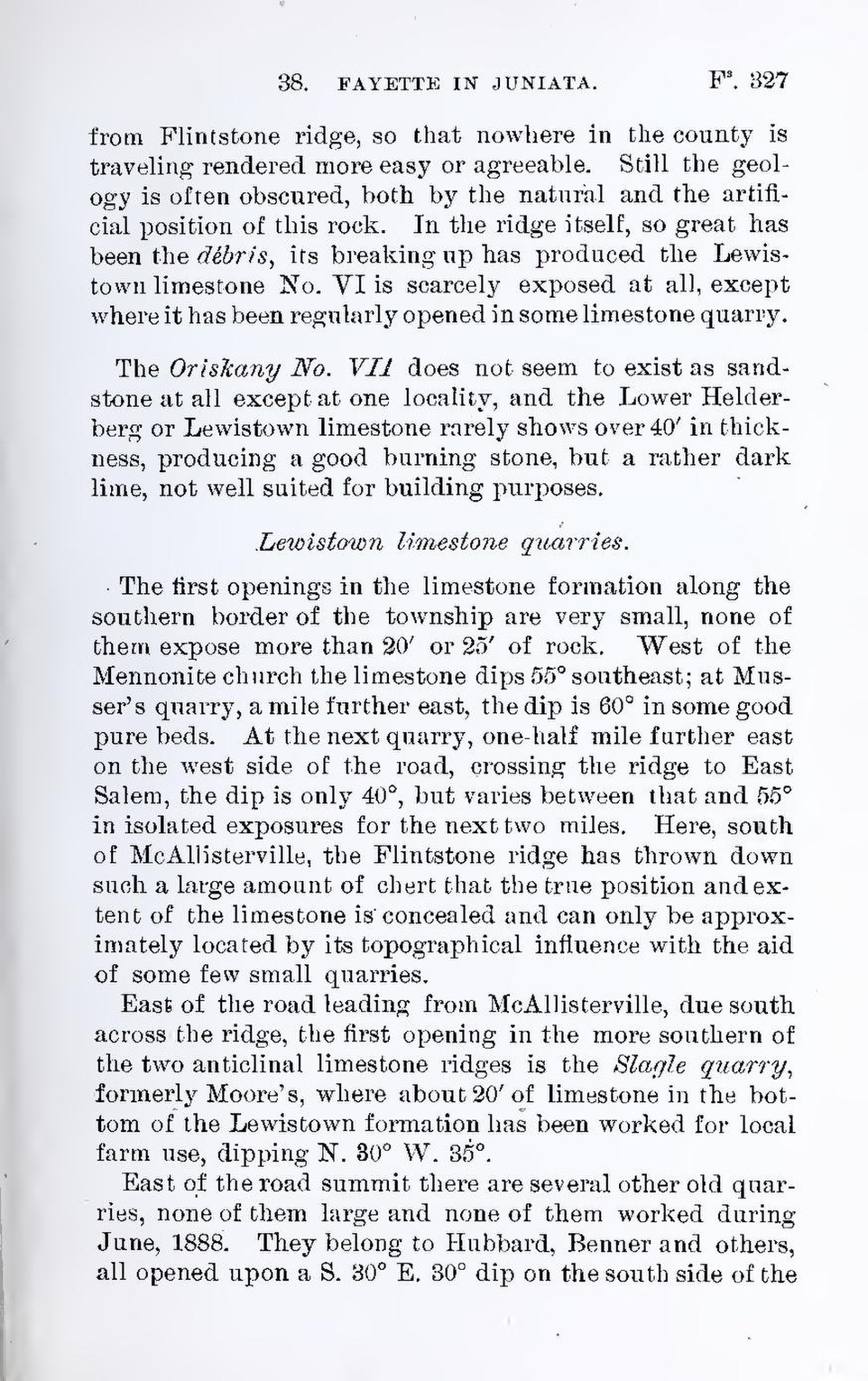from Flintstone ridge, so that nowhere in the county is traveling rendered more easy or agreeable. Still the geology is often obscured, both by the natural and the artificial position of this rock. In the ridge itself, so great has been the débris, its breaking up has produced the Lewistown limestone No. VI is scarcely exposed at all, except where it has been regularly opened in some limestone quarry.
The Oriskany No. VII does not seem to exist as sandstone at all except at one locality, and the Lower Helderberg or Lewistown limestone rarely shows over 40′ in thickness, producing a good burning stone, but a rather dark lime, not well suited for building purposes.
Lewistown limestone quarries.
The first openings in the limestone formation along the southern border of the township are very small, none of them expose more than 20′ or 25′ of rock. West of the Mennonite church the limestone dips 55° southeast; at Musser’s quarry, a mile further east, the dip is 60° in some good pure beds. At the next quarry, one-half mile further east on the west side of the road, crossing the ridge to East Salem, the dip is only 40°, but varies between that and 55° in isolated exposures for the next two miles, Here, south of McAllisterville, the Flintstone ridge has thrown down such a large amount of chert that the true position and extent of the limestone is concealed and can only be approximately located by its topographical influence with the aid of some few small quarries.
East of the road leading from McAllisterville, due south across the ridge, the first opening in the more southern of the two anticlinal limestone ridges is the Slagle quarry, formerly Moore’s, where about 20′ of limestone in the bottom of the Lewistown formation has been worked for local farm use, dipping N. 80° W. 35°.
East of the road summit there are several other old quarries, none of them large and none of them worked during June, 1888. They belong to Hubbard, Benner and others, all opened upon a S. 30° E. 30° dip on the south side of the
